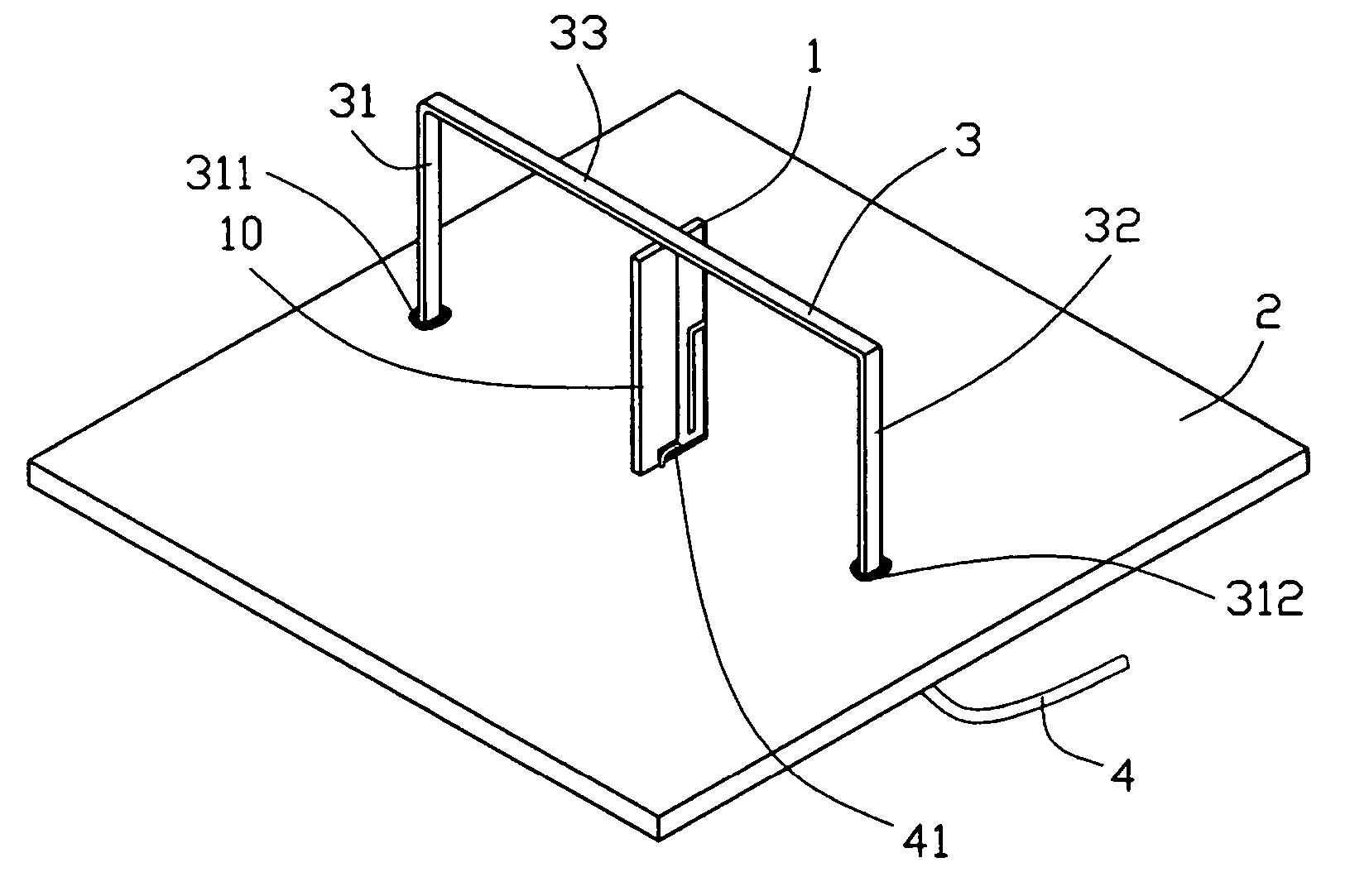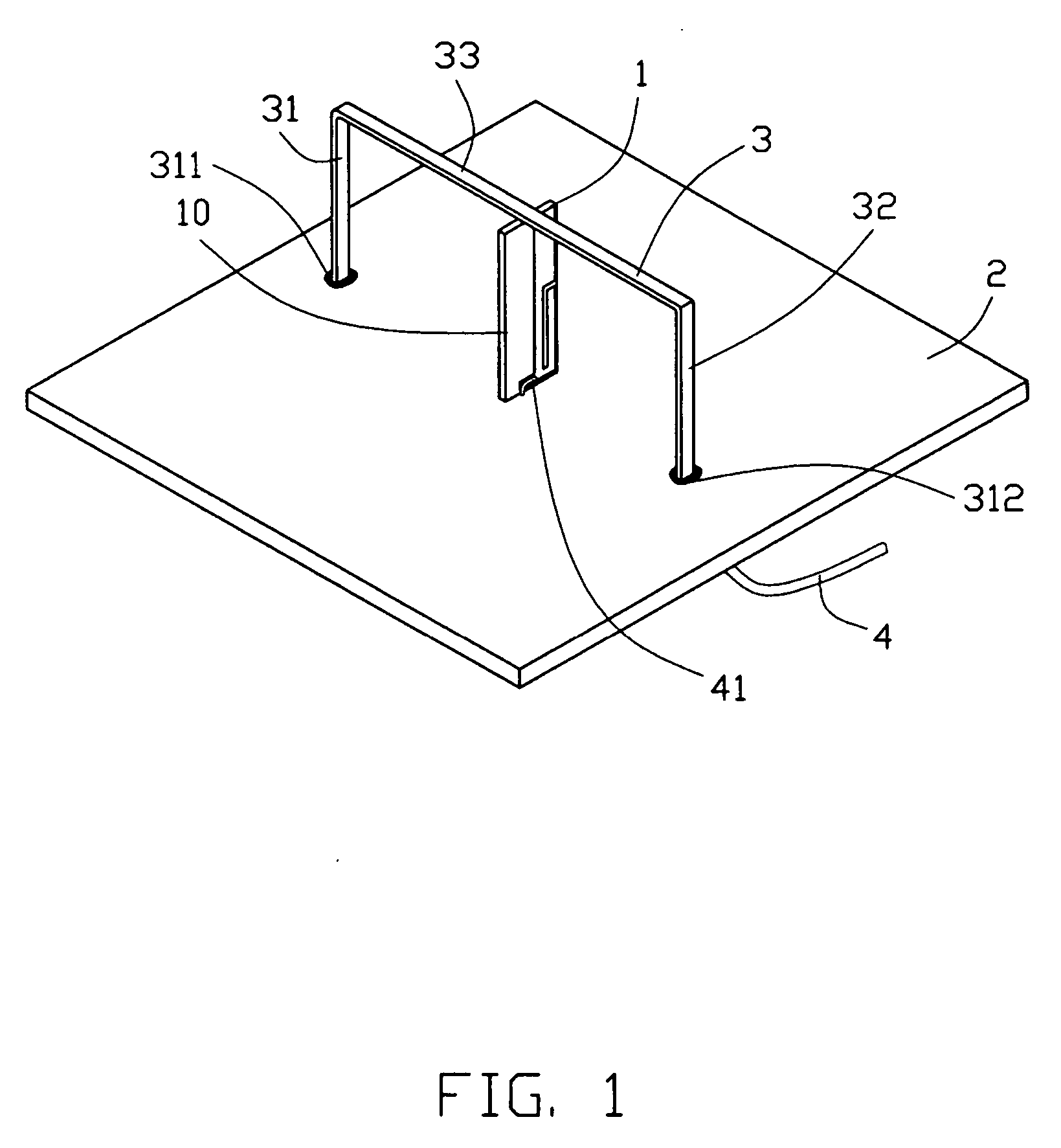Impedance matching means between antenna and transmission line
- Summary
- Abstract
- Description
- Claims
- Application Information
AI Technical Summary
Benefits of technology
Problems solved by technology
Method used
Image
Examples
Embodiment Construction
[0014] Reference will now be made in detail to a preferred embodiment of the present invention.
[0015] Referring to FIG. 1, an antenna comprises a radiating body 1, a grounding plate 2 and a coaxial cable 4. The radiating body 1 is arranged on the grounding plate 2 and power energy is supplied thereto by the coaxial cable 4. An impedance matching means is realized by a parasitic element 3, which is arranged on the grounding plate 2 as well.
[0016] The radiating body 1 is formed of a metal foil fabricated on a dielectric substrate 10 thereof. The dielectric substrate 10 is disposed perpendicularly on the grounding plate 2. The area of the grounding plate 2 is much greater than that of the dielectric substrate 10. In this way, the grounding plate 2 provides a mirror image for the radiating body 1 above it so that it is as if another radiating body 1 is located below the grounding plate 2. The parasitic element 3 positioned on the grounding plate 2 crosses the radiating body 1 and is u...
PUM
 Login to View More
Login to View More Abstract
Description
Claims
Application Information
 Login to View More
Login to View More - R&D
- Intellectual Property
- Life Sciences
- Materials
- Tech Scout
- Unparalleled Data Quality
- Higher Quality Content
- 60% Fewer Hallucinations
Browse by: Latest US Patents, China's latest patents, Technical Efficacy Thesaurus, Application Domain, Technology Topic, Popular Technical Reports.
© 2025 PatSnap. All rights reserved.Legal|Privacy policy|Modern Slavery Act Transparency Statement|Sitemap|About US| Contact US: help@patsnap.com



